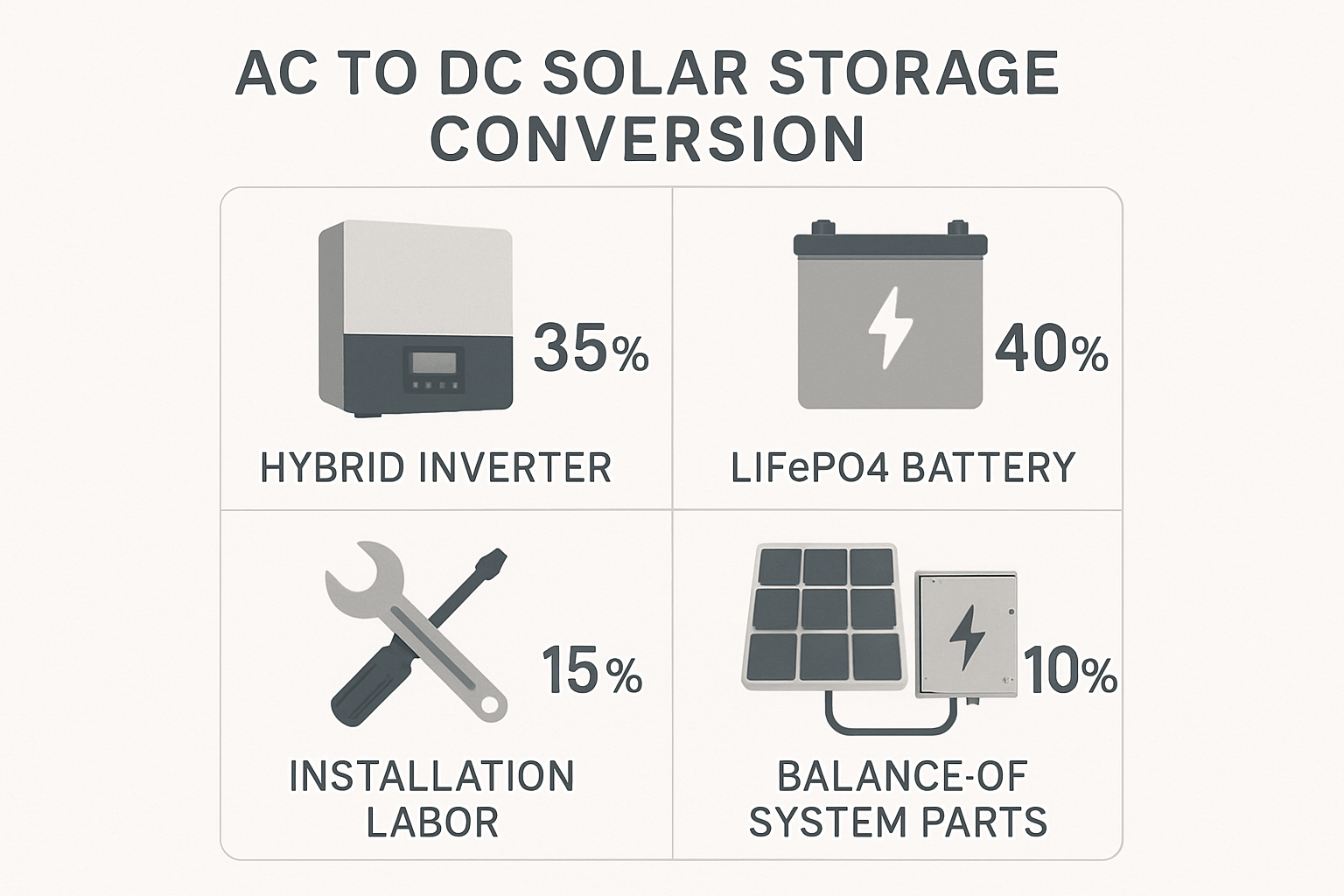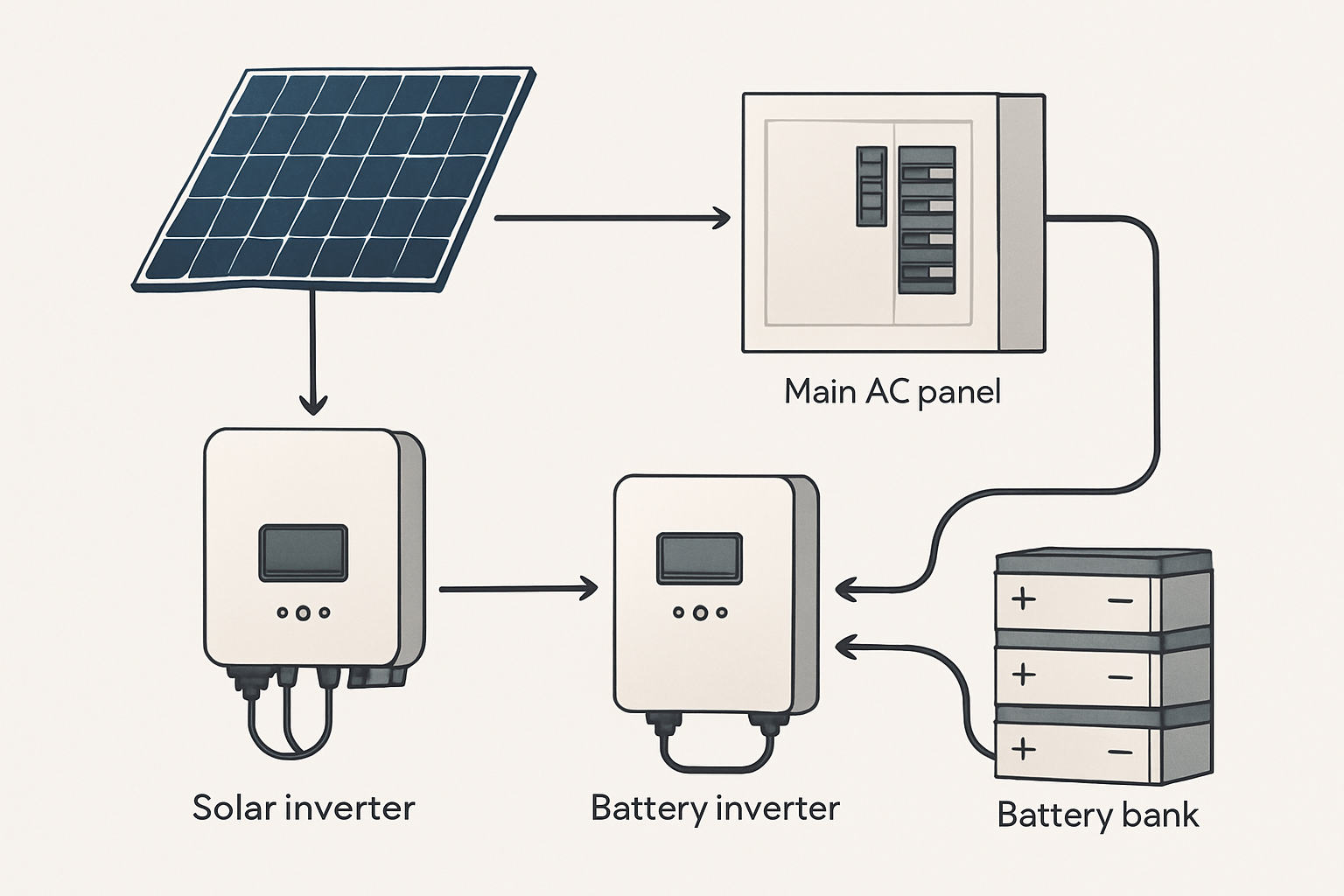Many owners of existing solar power systems eventually face a critical decision: upgrading their energy storage. If your system currently relies on older technology like lead-acid batteries, the question of retrofitting a modern DC deep cycle lithium battery becomes prominent. This upgrade promises better performance and a longer lifespan, but is it a financially sound decision for your setup? A detailed examination of the costs, benefits, and technical requirements will provide a clear answer.
Understanding the Core Technology: DC Deep Cycle Lithium Batteries
Before weighing the pros and cons, it's helpful to know what makes these batteries suitable for solar applications. The technology inside a DC deep cycle lithium battery is fundamentally different from older chemistries, directly impacting its performance and longevity.
Key Characteristics of LiFePO4 Chemistry
Most high-quality deep cycle lithium batteries use Lithium Iron Phosphate (LiFePO4) chemistry. This specific composition is known for its exceptional safety and stability, reducing the risks of overheating. LiFePO4 batteries are built for endurance, offering thousands of charge and discharge cycles, which far surpasses the few hundred cycles typical of traditional lead-acid batteries. This durability makes them a reliable cornerstone for a home energy storage system.
Deep Cycle vs. Starter Batteries
It is important to distinguish between deep cycle batteries and starter batteries. A starter battery, like the one in your car, is designed to deliver a powerful burst of energy for a short duration. In contrast, a DC deep cycle battery is engineered to provide a steady, consistent stream of power over many hours. This characteristic is precisely what's needed to power a home through the night or during periods of low solar generation, making them the only appropriate choice for energy storage systems.
Weighing the Financial and Performance Gains
A retrofit is both a financial and a technical upgrade. Analyzing the upfront costs against the long-term value and performance enhancements is the best way to determine if this investment is worthwhile for your specific situation.
Upfront Costs vs. Long-Term Value
There's no denying that DC deep cycle lithium batteries have a higher initial purchase price than their lead-acid counterparts. However, the true cost of a battery is revealed over its entire operational life. A metric known as the Levelized Cost of Storage (LCOS) helps compare different technologies by calculating the cost per kilowatt-hour of energy discharged over the battery's lifespan. Due to their much longer cycle life and lower maintenance needs, LiFePO4 batteries often have a significantly lower LCOS, making them more economical in the long run. According to a report from the International Energy Agency (IEA), battery costs have dropped by over 90% in less than 15 years, one of the fastest declines ever seen in clean energy technologies.
| Feature | DC Deep Cycle Lithium (LiFePO4) | Traditional Lead-Acid (AGM/Gel) |
|---|---|---|
| Upfront Cost | Higher | Lower |
| Cycle Life | 3,000 – 7,000+ cycles | 300 – 1,000 cycles |
| Depth of Discharge (DoD) | 80-100% | 50% |
| Round-Trip Efficiency | ~95% or higher | ~80-85% |
| Maintenance | None required | Regular (for flooded types) |
| Lifetime Value | Excellent | Fair to Poor |
Performance Improvements You Can Expect
Upgrading to a lithium battery delivers tangible performance benefits. One of the most significant is the higher round-trip efficiency. LiFePO4 batteries can have an efficiency rate of over 95%, meaning that for every 100 watts of solar energy you store, you can use at least 95 watts. Lead-acid batteries, by comparison, have efficiencies closer to 80-85%, losing more of your valuable solar energy during the storage process. Furthermore, lithium batteries offer a much greater Depth of Discharge (DoD). You can safely use 80-100% of a lithium battery's capacity without harming it. A lead-acid battery should only be discharged to about 50% to preserve its health. This means a 100Ah lithium battery provides nearly twice the usable energy of a 100Ah lead-acid battery.
Key Technical Considerations for a Successful Retrofit
A successful retrofit requires more than just swapping out the battery. Ensuring your existing components are compatible is critical for safety, efficiency, and the longevity of your new investment.
Inverter and Charge Controller Compatibility
Your existing solar inverter and charge controller must be configured for the specific charging parameters of LiFePO4 batteries. These batteries require different voltage and current settings than lead-acid models. Using incompatible equipment can lead to inefficient charging, reduced performance, and could even damage the battery's internal components. Many modern, programmable controllers can be adjusted for lithium profiles, but older units may need to be replaced.
The Role of the Battery Management System (BMS)
Every DC deep cycle lithium battery includes an integrated Battery Management System (BMS). The BMS is an essential electronic circuit that acts as the battery's brain. It protects the cells from common issues like overcharging, over-discharging, excessive current, and extreme temperatures. This intelligent monitoring ensures the battery operates safely and helps it achieve its maximum possible lifespan, a protective feature not typically found in lead-acid batteries.
Making an Informed Decision for Your Home
Ultimately, the decision to retrofit depends on your specific circumstances, including the state of your current system and your future energy goals. The rapid growth in battery storage, as noted by the U.S. Energy Information Administration (EIA), highlights the increasing viability of these upgrades for homeowners.
Scenarios Where a Retrofit is Highly Recommended
A retrofit is an excellent choice if your current lead-acid batteries are approaching the end of their useful life. Instead of replacing them with the same technology, upgrading to lithium provides an immediate boost in usable capacity and efficiency. It also makes sense if your household energy consumption has grown and your current storage system can no longer meet your needs. A lithium battery can often provide more usable power in the same physical footprint.
Situations Where You Might Reconsider
If your entire solar installation, including panels and inverter, is over a decade old, a complete system overhaul might be a more practical approach than a piecemeal upgrade. Additionally, if your budget is strictly limited, the higher upfront cost of a lithium battery may be a barrier, even with the long-term savings.
Disclaimer: This information is for educational purposes only and does not constitute financial or investment advice. Always consult with a qualified professional before making significant changes to your solar energy system.
A Strategic Upgrade for Modern Energy Needs
Retrofitting a DC deep cycle lithium battery is a powerful move toward greater energy independence. It transforms an existing solar installation into a more efficient, capable, and long-lasting power source. While the initial investment is higher, the superior performance, extended lifespan, and minimal maintenance deliver compelling long-term value. The decision hinges on a careful evaluation of your current system's condition, your budget, and your goals for energy autonomy. For a deeper analysis of storage metrics, understanding key performance indicators is crucial. You can find a comprehensive breakdown in this ultimate reference on solar storage performance.
Frequently Asked Questions
Can I mix lithium and lead-acid batteries?
This is strongly discouraged. Different battery chemistries have unique charging and discharging profiles, voltages, and internal resistances. Combining them can result in inefficient operation, damage to both types of batteries, and create potential safety risks.
Do I need a new solar charge controller for a lithium battery?
Most likely, yes. Unless your current charge controller is a modern, programmable model that explicitly supports LiFePO4 charging profiles, you will need to upgrade it. A compatible controller is essential for charging the battery correctly, which maximizes its safety and lifespan.
How much longer will a DC deep cycle lithium battery last compared to a lead-acid one?
A quality LiFePO4 battery can provide between 3,000 and 7,000 cycles, translating to a lifespan of 10-15 years or more under normal use. A comparable deep cycle lead-acid battery typically lasts for 300 to 1,000 cycles, which often means it needs to be replaced every 3 to 5 years.





Leave a comment
All comments are moderated before being published.
This site is protected by hCaptcha and the hCaptcha Privacy Policy and Terms of Service apply.